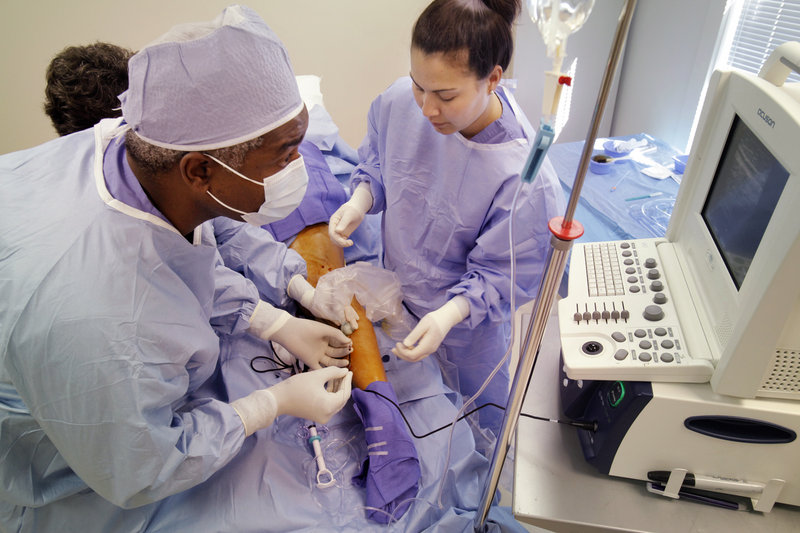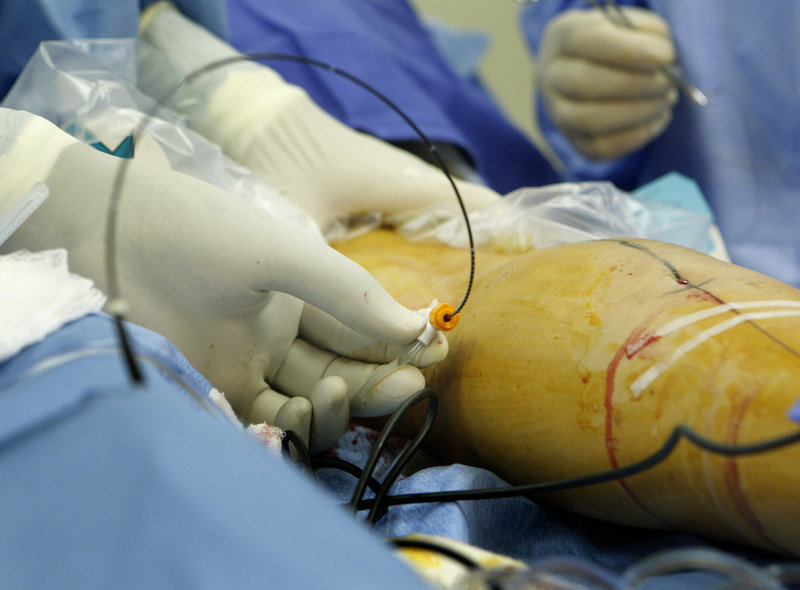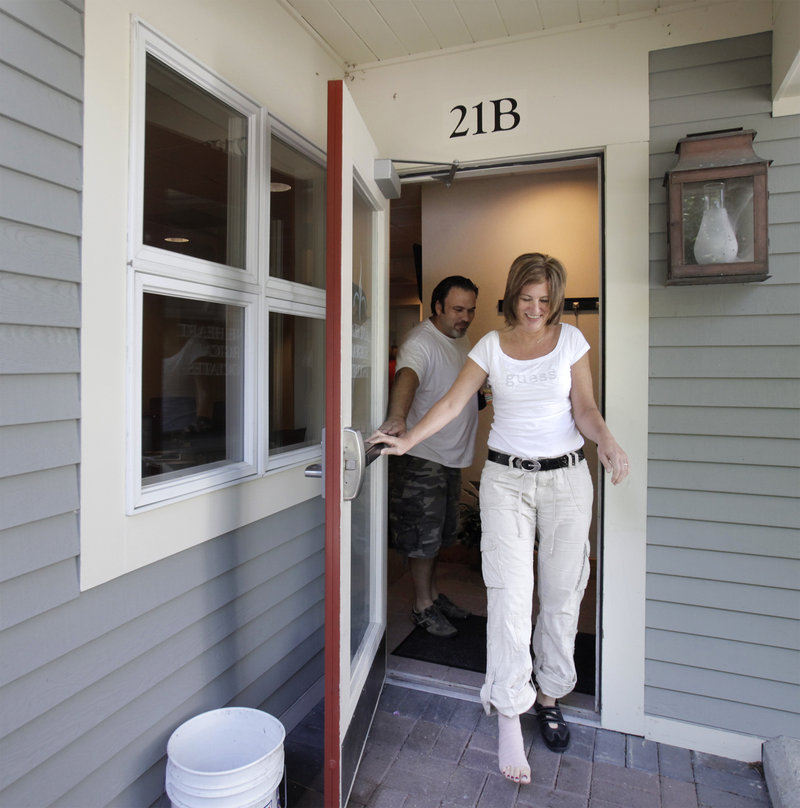FALMOUTH — When Laurette Poulin had surgery to remove painful varicose veins in her left leg 10 years ago, she spent two days in a hospital and three weeks recovering at home.
This week, it took a surgeon in Falmouth about 20 minutes to seal two swollen and painful veins in her right leg. Poulin was awake through the whole thing and walked out of the surgical office, smiling, about 15 minutes later.
“I was very surprised. It’s quick,” said Poulin, who lives in Saco. “Now my two legs are fixed.”
More than 25 million American adults — between 10 percent and 20 percent — suffer from varicose veins. And a growing number of them, like Poulin, are getting relief with the help of new, almost-painless surgical procedures that can be done during a typical lunch hour.
Varicose veins are caused by faulty valves that allow blood to drain back down into the veins rather than to the heart. The condition often causes lumpy, swollen and discolored veins, usually in the patient’s legs.
The condition runs in families and is more common in women and in people such as teachers and nurses who spend a lot of time on their feet.
Along with the cosmetic impact, varicose veins can be painful and debilitating. They can also lead to more serious medical problems, such as ulcers.
Poulin, whose mother and grandmother also had the problem, had noticed increasing pain in her leg in recent months, especially after spending hours on her feet working in a department store at the Maine Mall.
“After work, I need to lay down because my leg was sore, painful (and) puffy,” she said.
Surgical treatment of the problem used to be unpleasant, as well. It involved the physical removal or stripping of the vein, and lots of bruising, pain and discomfort.
“It’s so hard on the patient,” said Dr. John Braxton, the surgeon who did Poulin’s surgery.
Braxton, with Maine Heart Surgical Associates in Falmouth, has done his share of the removal surgery.
But for the past three years, he and the other surgeons in his practice have been doing a vein closure procedure using spaghetti-like catheters and radio frequency waves. The office has done more than 1,000 of the procedures and has a 98 percent success rate, he said.
“They just walk in and walk out. That’s the amazing part,” Braxton said. “When we started doing this, we said, ‘Nah, this can’t work.’ “
On a recent morning, Braxton did two vein closure surgeries in his office before going to the hospital to perform a heart bypass operation that afternoon.
The new surgical procedures — known as endovenous ablation — leave the varicose veins in place but seal them off so that they no longer contain blood and quickly shrink. The blood flows through alternative, healthy veins back to the heart.
Some surgeons now use laser catheters to seal off the veins. Maine Heart Surgical Associates uses a VNUS Closure radio-frequency catheter to heat up the inside of the vein so that it closes and forms a seal.
Poulin was given a mild relaxant and laid her head down. She could not see the surgery, but Braxton and ultrasound technologist JoAnn Rego talked to her throughout, occasionally warning her that she might feel a pinch as the catheter was placed into the veins.
Braxton used a local anesthetic to numb the veins and the site of two small incisions in the back of her lower leg. He carefully moved the catheter into position inside each vein with the help of an ultrasound machine that showed a grainy black-and-white internal image of the vein walls. Once in place, the catheter heated the inside of the vein for several seconds.
“It shows that it’s closed,” Braxton said, looking at the ultrasound screen.
The procedure costs about $4,900 and is typically covered by health insurance, including Medicare.
Braxton said he didn’t realize there were so many people suffering with the condition until he started offering the kinder, gentler treatment.
“The degree that this has taken off has surprised us,” Braxton said. “There are a lot of people out there. They used to have to put up with this, but now they don’t.”
One day after Poulin’s surgery, she was back in action.
“I’m doing very well,” she said. “It’s a little puffy, but I can walk and I can do the things I normally do.”
Staff Writer John Richardson can be contacted at 791-6324 or at:
jrichardson@pressherald.com
Send questions/comments to the editors.





Success. Please wait for the page to reload. If the page does not reload within 5 seconds, please refresh the page.
Enter your email and password to access comments.
Hi, to comment on stories you must . This profile is in addition to your subscription and website login.
Already have a commenting profile? .
Invalid username/password.
Please check your email to confirm and complete your registration.
Only subscribers are eligible to post comments. Please subscribe or login first for digital access. Here’s why.
Use the form below to reset your password. When you've submitted your account email, we will send an email with a reset code.